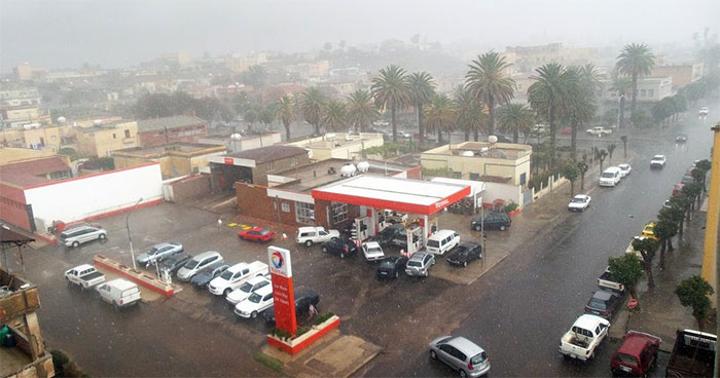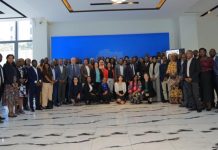Africa-Press – Eritrea. When my friends and I were recently discussing ‘Things Fall Apart,’ by Chinua Achebe, one of the most widely read African novels, we were arguing over the traditions of the tribes portrayed in the book, especially the one related to agriculture and rainmaking rituals.
One of my friends described the tradition as backward and superstitious. Her comments made me wonder what foreigners will say about our traditions and culture if we, as Africans, describe our cultural and traditional practices like that. I am not by any means claiming that our traditions do not have bad sides to them. What I am saying is that to consider them all backward is unrealistic.
A good example that helped me persuade my friend is the power of empirical knowledge aiding in the life of African farmers, the Nganyi rainmakers of Bunyore tribe of the Luhya community of western Kenya. The Nganyi rainmakers are known by Kenya’s meteorological department, research institutes, and universities for their competence in perfecting the science of rainmaking which they have long used in advising local communities about when and what to plant based on weather patterns.
Climate change is one of the biggest challenges facing human beings. Therefore, climate-related information and agro-advisory services are crucial for smallholder farmers and pastoralists in Africa to help them manage climate-related risks and adapt to climate change.
Many farmers and pastoralists rely on indigenous knowledge (IK), where an institutionalized local place-based knowledge rooted in local cultures is often passed on across generations through oral history. IK is influenced by the previous generations’ observations and experimentations and provides an inherent connection to one’s surroundings and environment. IK weather forecasting is very well established in many African cultures and communities, with different indicators used by various communities and cultures to predict future weather conditions. Farmers, pastoralists and indigenous experts in Africa observe local weather phenomenon; the behavior of insects, animals, and plants; the direction of winds; and the types of clouds to forecast local weather conditions, the intensity and distribution of rainfall, the occurrence and magnitude of droughts and floods. Forecast information is disseminated directly from IK experts or indirectly through village assemblies, relatives and friends.
In Eritrea’s tradition, clouds have always been associated with rain. Two well-known rain clouds — a dark, rain carrying cloud of bad weather and a cloud that produces showers and thunderstorms — are used for forecasting. The Eritrean indigenous meteorological indicators that are used to give forecasts about the onset and intensity of rain include the appearance of dark clouds, the direction and strength of the wind, very high night temperatures, lightning and thunder at night with no rain, and appearance of less dew on grass and plants. Also high temperature is known as the best predictor of the onset of rainfall. Excessive heat and warming towards the end of the dry season indicates a higher likelihood of above normal rainfall while high temperatures during the night indicate a likelihood of rainfall the next day. Strong winds and whirl winds, known as Hebobla, indicate an onset of imminent rainfall while repeated lightning in the evening during the dry season is an indication of the onset of short-rain season.
In general, our grandfathers used to predict that it is about to start raining by observing subtle changes in nature and making interpretations of how plants react and animal behaviors. They are able to predict with high precision and accuracy the local weather, particularly the timing and intensity of rains and drought. Moreover, Mehlela, the rites which accompany prayers for rain, is performed almost every day in the run-up to the rainy season and when the so anxiously awaited rain has fallen, the community immediately arranges for a planting ceremony where the seeds are blessed to ensure good harvest.
Lack of rain is usually associated with sin and, therefore, the high priest urges the people to cleanse themselves of sins committed against one another, the environment and God, creating a platform for the community to have peace by forgiving one another.
Like my friend many may dismiss aspects of African indigenous knowledge as primitive and magic. This perspective, however, misses the whole point of the indigenous knowledge, whose purpose is not simply to give, for example, weather forecast but also to give hope to the farmers.
Fortunately, Africa has a wealth of knowledge that African communities have long used to sustain themselves in the face of climate change. Many African communities have used indigenous knowledge as a critical strategic base and survival tool during extreme climate events and other natural hazards. African indigenous knowledge is knowledge that an African community has built-up, accumulated and handed down through generations. It encompasses every aspect of that community’s existence, including its holistic understanding of local ecology, education, art, technology, medicine, norms, social organization, spirituality and worldview. Such knowledge is place-based and rooted in local cultures and is generally associated with a community’s strong interactions with their natural environments.
Ignoring our tradition and relying exclusively on science might destroy the centuries-old knowledge our forefathers have accumulated which may hold the solution to the environmental crisis human beings are facing due to climate change.







